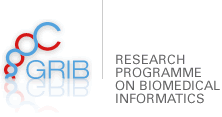
Wednesday, 1st February, 2017, 12:00 - 13.00
Comparative Transcriptomics and RiboSeq: Looking at De Novo Gene Emergence in Saccharomycotina
In de novo gene emergence, a segment of non-coding DNA undergoes a series of changes which enables transcription of the segment, potentially leading to a new protein with a novel function. What makes de novo genes different from other genes? Due to their unique origins, young de novo genes have no homology with other genes and may not initially be under the same selective constraints. While dozens of de novo genes have been observed in many species, the mechanisms driving their appearance are not yet well understood. To study this phenomena, we have performed deep RNA-seq and ribosome profiling (RP) on 11 species of yeast from the phylum of Ascomycota in both rich media and oxidative stress conditions. These data have been used to classify the conservation of genes at different depths in the yeast phylogeny. Hundreds of genes in each species were novel (non-annotated), and many were identified as putative de novo genes; these can then be tested for signals of translation using our RP data. We show that putative de novo genes have different properties when compared to phylogenetically conserved genes. Understanding the mechanisms behind de novo gene emergence in a 'simple' eukaryote like S. cerevisiae may help to explain some of the unique adaptations seen in more complex organisms.
Speaker: Will Blevins, Evolutionary Genomics, GRIB (IMIM)
Room Aula 473.10 (PRBB, 4th floor)


